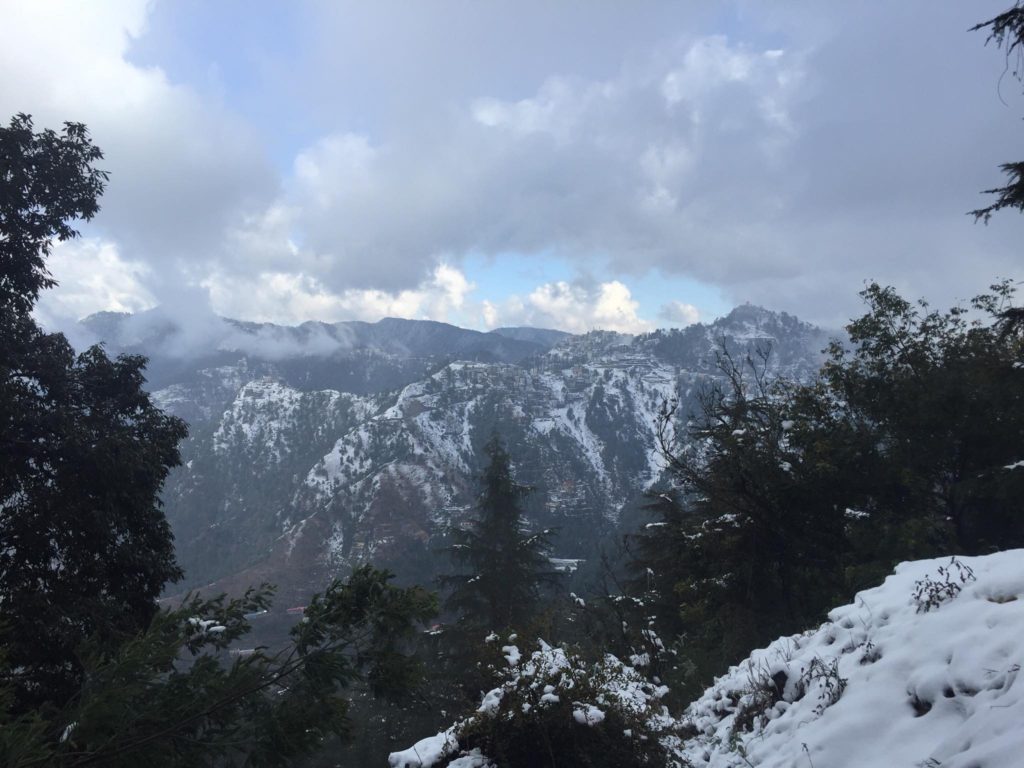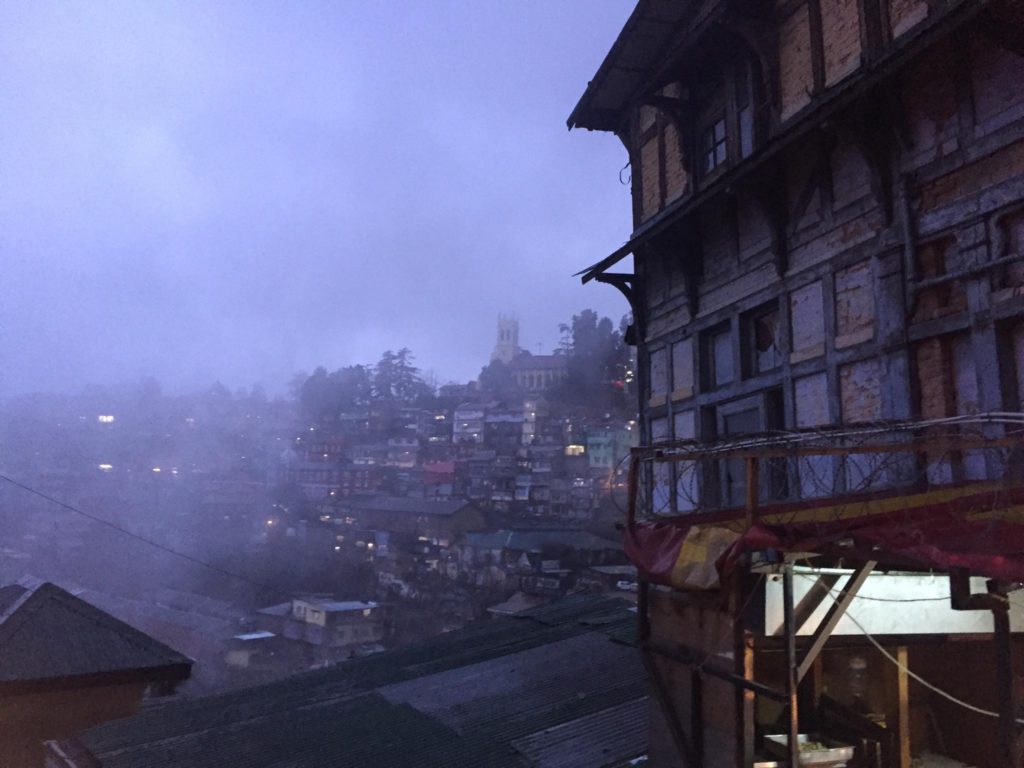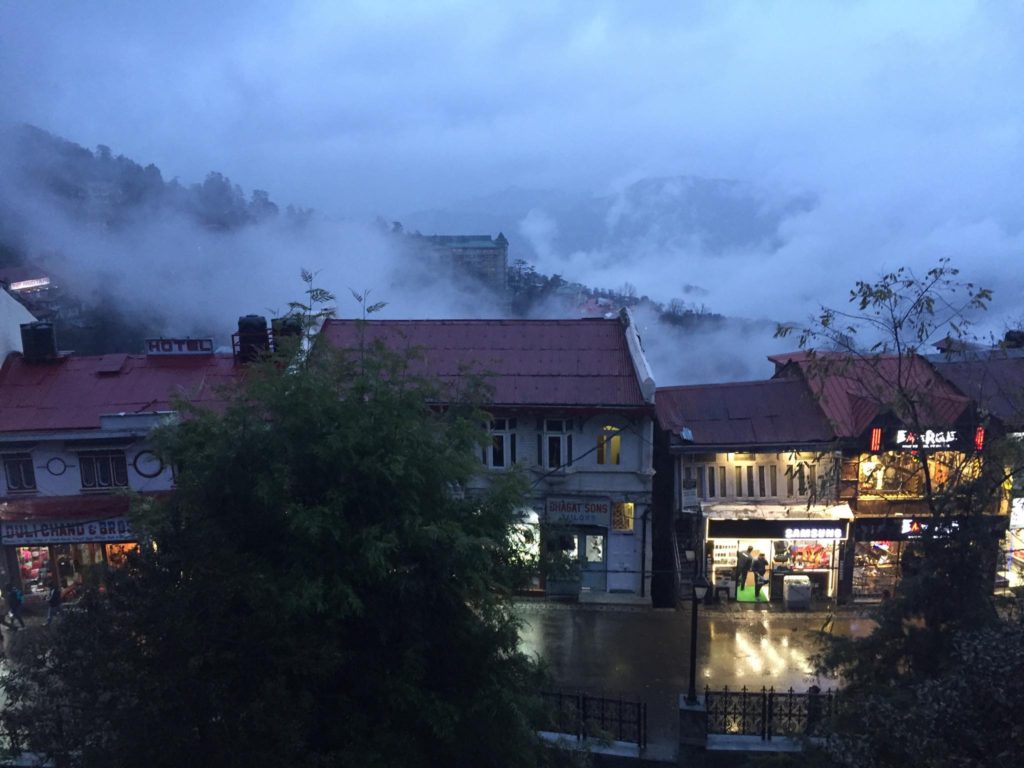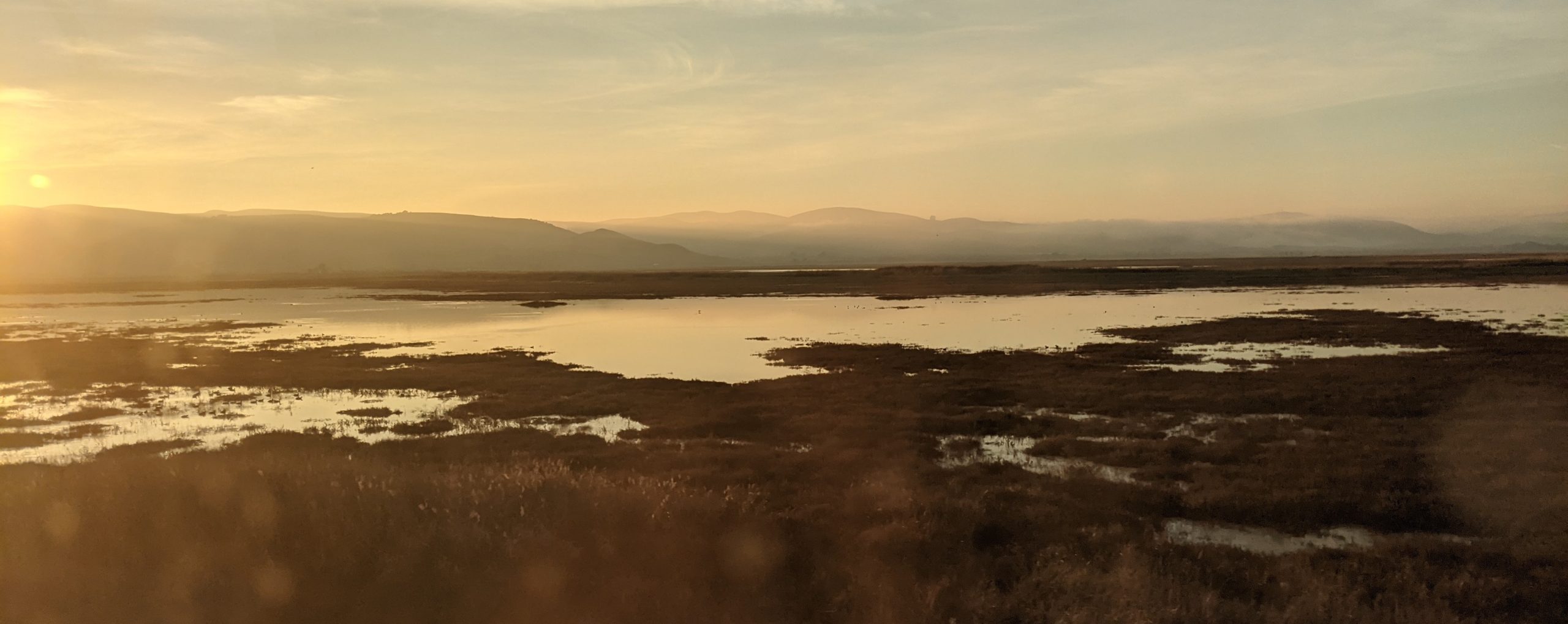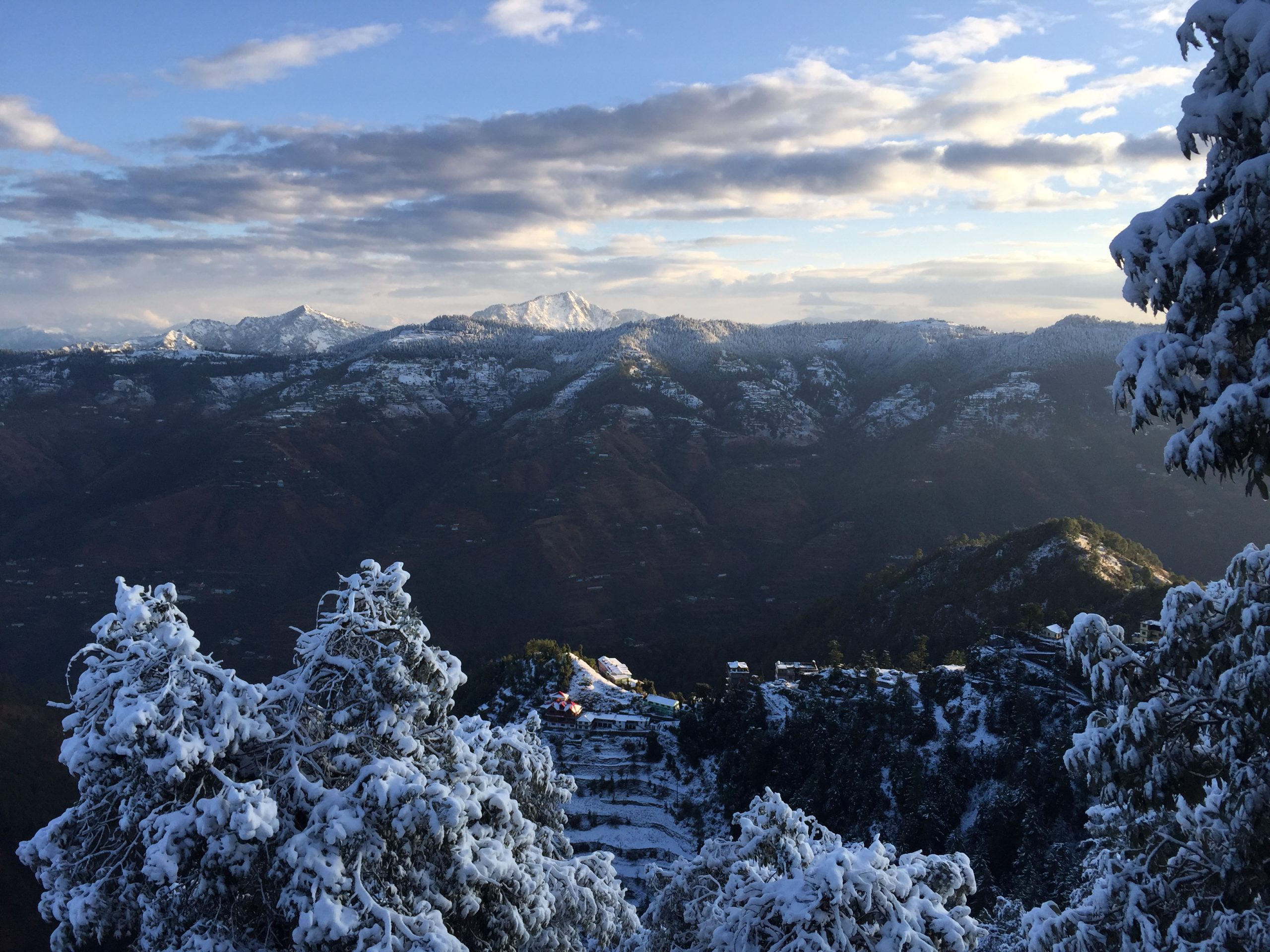I haven’t left India in almost a year. As always I have complicated feelings about this, but sometimes less is more when it comes to self-reflection, and as multiple people have told me: “not everything needs to fit into some clean narrative, sometimes you just have to live life and deal with the consequences” (thankfully, my December has been calmer than last year’s, devoid of hippo attacks or home break-ins).
A week ago, I woke up to Shimla’s first snowfall of the year. I rushed to the full-panel window of our office in the middle of the mountains and walked the mile to the town on the unplowed road, marveling at the beauty of the snow.
Most of my conversations these days are about the terrible things that are happening in the world, and how there is (maybe insurmountably) much to be done in terms of fighting against poverty and for civil liberties. I spend most of my time reading and trying to work for this in those small ways I can. But to me, all of this makes it even more important to think and write on what is good in the world. As I wrote three years ago about wonder, “The world is too terrible for any one thing to remain unconnected from the heaviness of life. But let there be a healthy wall of separation, lest the reasons for living become conflated with the means of production, lest we forget why you work for greater income equality, or education for girls, or to make the world better in any way”.
There has been so much to wonder at every day in this last year in Delhi, from walking through my neighbourhood to trekking in the jungle. Every season brings something new. So as my year-end reflection for 2019, I’m going to share two pieces I wrote during the tail-ends of the monsoon.
July
The monsoon finally came to Delhi on Rath Yatra. The street leading to the office was closed down for the celebration – there’s a sparkling white temple near the side of the road – and my colleague was trying to explain it to us in French.
“In Odisha, they make chariots for the deities at the Jagannath temple. It’s where the English word ‘juggernaut’ comes from – an unstoppable force.”
The rain came slowly that first day, a slight darkening of the clouds and dampening of the ground. Water dripped from the wires in the lanes and people in damp clothing sat on the steps of the high-end boutiques, waiting. Some nonsmokers joined the smoke breaks on the roof because the temperature had dropped 25 degrees in a day (humidity had also risen 50 percentage points). Since I’d come here, people had warned me that street food gets worse during monsoon. So I walked down the street for what I told myself would be my last kathi roll and kulfi for a month.
We walked to the traffic on the street strewn with piles of soaked plates from the festival. The police, in beige, wove in and out of the thinning crowd. There was the curious odour of fresh rain and rotting food, and the temple rose stark white from the damp street. We were in traffic for an hour and talked about conspiracy theories.
***
The day after, the street became a river. Pedestrians slogged across the speed bumps. The fruit had never looked more red or green or orange, sitting in stands like marzipan decorations. I pressed my hand to the window of the taxi to see if it would stop the rush of water.
We walked the same road to the bar after work. The plates had fused into pungent heaps and there was no food from the festival left. Bags of trash littered the rain-fed forest to our left.
On the walk home, the sun was half-gone and the air, but not the street, was damp. An old man rode a bicycle downhill, carting ten or so boxes. He paused, adjusted the boxes, and continued on his way as taxis and autos honked past him. Across the street by a small, old tomb, another man sat with his back to the street, next to a dark shape that appeared like a dog. But on closer look, it was only a backpack.
September
I’m entering my eighth month of walking around South Delhi, and it has lost none of what made it special at first.
Today I went to the shops in Green Park at 8:30 in the morning. They were all closed except the ATMs and one bank and one cake shop, where they were dusting off the counters and one of the cashiers was still shirtless, surprised when a customer walked in. The building is like a small labyrinth.
At this time of year, the heat is bearable. For every hour of walking around, there’s one moment that smells like Hawaii – maybe the smell of ground after rain (I read somewhere that humans are really good at detecting the scent of rain in soil, some holdover from our foraging pasts), or a certain type of shrubbery, or when you turn the corner from the autos and exhaust fumes and the smell is inexplicably lovely.
Every time I take the metro to Chhattarpur, I stand and track the silhouettes of the temples above the trees. They are grand, probably modern, unlike the surprise tombs among the apartments of Shahpur Jat or Hauz Khas. There is a massive red Buddha statue that I just catch a glimpse of before pushing myself out the metro past a woman in yellow who clings to the rail, stoically, with her back completely turned to the passengers getting out.
When will it hit me that I’m tired and the city has made me harder and meaner? Sometimes I feel it for a moment, but all I have to do is take a walk through the city, take one ride on the metro, and it goes away. There are so many people with their own lives, and so much to see every day.
From an auto, seats lined with pink plastic, I see the shops in green and yellow and red; the blue trucks and their orange-gold decorations. I can nearly touch the auto with the red I <3 Kejriwal sign on the back, imagining that all the autowallas with these signs are really just one autowalla traversing the city, somehow in many places at once. A horn honks loudly to our right.
Addendum: More photos of the impossibly lovely Shimla, which looks like the bathhouse from Spirited Away transported to the middle of the Himalayas.
